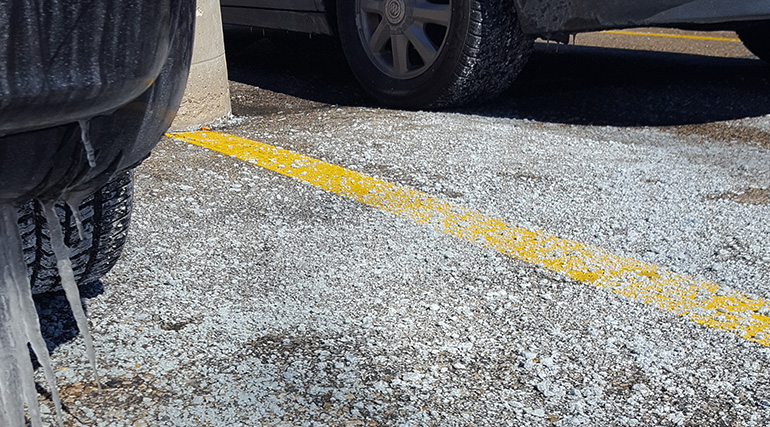WI Salt Awareness Week examines environmental damage caused by road salt
posted

It doesn't just disappear. The salt we use every winter -- more than 525,000 tons of it in Wisconsin -- washes into our lakes, rivers, streams and wetlands, putting aquatic life at risk and endangering our freshwater resources.
“It goes into the lake. It finds its way into groundwater,” says Madison Water Utility water quality manager Joe Grande. “We want our parking lots and streets cleared, but we don’t think about the impact that it has.”
The impact on Madison’s drinking water is becoming hard to ignore. Road salt is made up of two chemicals, sodium and chloride. Both are now showing up in water pumped from five of Madison's 23 municipal wells.
“If we don’t reduce the amount of salt reaching those wells, the water at one of them could actually start to taste salty within the next 15 years. Two others within the next 40 years,” says MWU public information officer Amy Barrilleaux.
Barrilleaux will be one of the speakers at the first ever WI Salt Awareness Week, January 11 though 15. The event will showcase best practices for responsible salt use during a series of daily livestreams. The week features experts from a variety of fields detailing the impacts of salt overuse, from degrading our freshwater resources to corroding roads, bridges and other infrastructure.
About half of the road salt used in Madison is put down on sidewalks, driveways and parking lots. This week property managers can attend a virtual Smart Salting Training on Thursday, Jan. 14, to learn the right way to use salt while keeping parking lots safe.
Wi Salt Awareness Week is organized by the WI Salt Wise partnership, a coalition of organizations working together to reduce salt pollution in our lakes, streams and drinking water. Learn more at www.wisaltwise.com.
Subscribe to Water Utility News & Alerts Updates
Archive
Categories
- All Posts »
- History (8)
- Our People (11)
- Serving the Community (29)
- Sustainability (27)
- Water quality (15)
Tags
- aquifer
- Arbor Hills
- AWWA
- Barrymans
- Blackhawk
- Booster Pump Station 106
- CAP
- capitol
- chloride
- chlorine
- Clean Water
- Climate Change
- Common Council
- Community
- Conservation
- cost
- cost of water
- Customer Care
- Customer service
- disinfection
- drinking water
- Education
- efficiency
- energy
- engineering
- environment
- EPA
- Fire
- Fire protection
- Flooded houses
- freezing
- Frozen pipes
- Got Water
- Got Water?
- graywater
- Greywater
- healthy kids
- History
- hydration
- Imagine a Day Without Water
- Inclusive workplace
- Infrastructure
- John Heim
- John Muir
- Lake View Hill
- lakes
- lead pipes
- lead service replacement program
- leaks
- Lou and Peter
- Lou and Peter Barryman
- Low Income
- Mad City Tappers
- Mad Women on Tap
- Madison
- Madison City Channel
- Madison Kipp
- Madison Municipal Services
- Madison Water
- madison water utility
- Madison Water Utility
- Main breaks
- Michael Edmonds
- MWU
- New well
- North Madison
- O'Dea
- Operation center
- Paterson
- Perfluorinated compounds
- PFAS
- pipes
- Placemaking
- plumbing
- Private Wells
- Project H2O
- Project Home
- Projects
- Public Works
- pumping
- Recycled water
- Remucal
- Reservoir Park
- Road Salt
- Safety
- shower
- Southeast
- stormwater
- study
- Survey
- Sustainability
- Tap Water
- Tapping Team
- TeamCity
- Technology
- Testing
- Testing
- Toilet Rebate
- UW
- UW Madison
- Wanda Fullmore Youth Internship Program
- water
- Water
- water bill
- Water board
- Water conservation
- Water Main
- Water main flushing
- Water Mains
- Water Quality
- Water Quality Report
- water safety
- Water supply
- Water Tower
- Water Utility
- Water Wagon
- Water Works
- WaterSense
- watershed
- Well 14
- Well 31
- Well 8
- Wellhead Protection
- West Madison
- west side
- Winter
- Winter Safety
- Winterization
- WiSaltWise
- Women's
- Women's History Month
- World War II
- WWA
